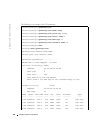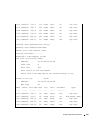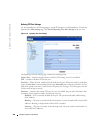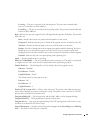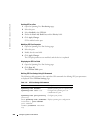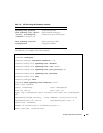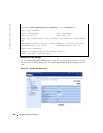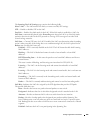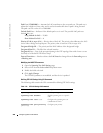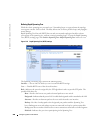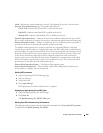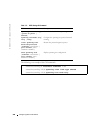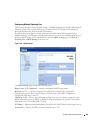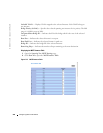
Configuring Switch Information 285
The
Spanning Tree LAG Settings
page contains the following fields:
Select a LAG
— The LAG number for which you want to modify STP settings.
STP
— Enables or disables STP on the LAG.
Fast Link
— Enables Fast Link mode for the LAG. If Fast Link mode is enabled for a LAG, the
LAG State
is automatically placed in the
Forwarding
state
when the LAG is up. Fast Link mode
optimizes the time it takes for the STP protocol to converge. STP convergence can take 30-60
seconds in large networks.
LAG State
— Current STP state of a LAG. If enabled, the LAG state determines what forwarding
action is taken on traffic. If the bridge discovers a malfunctioning LAG, the LAG is placed in the
Broken
state. Possible LAG states are:
Disabled
— STP is currently disabled on the LAG. The LAG forwards traffic while learning
MAC addresses.
Blocking
— The LAG is blocked and cannot be used to forward traffic or learn MAC
addresses.
RSTP Discarding State
— In this state the port does not learn MAC addresses and do not
forward frames.
This state is union of Blocking, and Listening state introduced in STP (802.1.D).
Listening
— The LAG is in the listening mode and cannot forward traffic or learn MAC
addresses.
Learning
— The LAG is in the learning mode and cannot forward traffic, but it can learn new
MAC addresses.
Forwarding
— The LAG is currently in the forwarding mode, and it can forward traffic and
learn new MAC addresses.
Broken
— The LAG is currently malfunctioning and cannot be used for forwarding traffic.
LAG Role
—Indicates the LAG role assigned by the STP algorithm that provides STP paths.
The possible field values are:
Root—Provides the lowest cost path to forward packets to root switch.
Designated
—Indicates that the via which the designated switch is attached to the LAN.
Alternate
—Provides an alternate LAG to the root switch from the root interface.
Backup
—Provides a backup path to the designated port path toward the Spanning Tree
leaves. Backup ports occur only when two ports are connected in a loop by a point-to-point
link. Backup ports also occur when a LAN has two or more connections connected to a shared
segment.
Disabled
—Indicates the LAG is not participating in the Spanning Tree.




